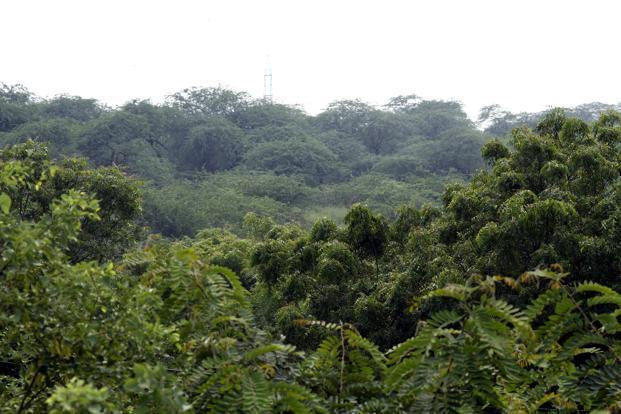State of Forests Report Released, Key Questions Remain

New Delhi: The Ministry of Environment and Forests released its bi-annual State of Forests report on Monday. The report lauds the ministry for the increase in the total tree and forest cover in the country. It goes on to claim that forest cover increased by 5,188 square kilometres in the past two years.
While releasing the report, Union Environment Minister Prakash Javadekar said there was an increase of 42.6 million tonnes in the carbon stock of the country as compared to the last assessment of 2017. "This report gives us confidence that we are on track to achieve our Paris Agreement goals," he said. He also said that the current assessment shows a decrease of forest cover to the extent of 765 sq km (0.45%) in North East India.
The report highlights that Madhya Pradesh has the largest forest cover in the country followed by Arunachal Pradesh, Chhattisgarh, Odisha and Maharashtra. In terms of forest cover as percentage of total geographical area, the top five States are Mizoram (85.41%), Arunachal Pradesh (79.63%), Meghalaya (76.33%), Manipur (75.46%) and Nagaland (75.31%), which are all from the North Eastern region of the country.
Forest cover of Jammu & Kashmir state has been updated for the now Union territories of J&K and Ladakh. The forest cover information for the two UTs has been derived using the shape file provided by Survey of India (SOI) in December 2019.
However, activists have raised questions over the claims of increase in forest cover and its methodology. Speaking to NewsClick, Kanchi Kohli, an expert on forests rights, said “the methodology for forest land and tree cover mapping continues to miss several significant parameters that include how forest land or areas outside forest areas with trees are used and managed.”
It is seen that there is an overall gain of 3,976 sq km of forest cover in the country as compared to the previous assessment reported in the ISFR 2017. The States/UTs showing significant gain in forest cover are Karnataka (1,025 sq km), Andhra Pradesh (990 sq km), Kerala (823 sq km) and J&K (371 sq km) whereas States showing loss in forest cover are Manipur (499 sq km), Arunachal Pradesh (276 sq km) and Mizoram (180 sq km). The report attributes the gain in forest cover to better conservation measures, protection and afforestation activities.
However, is there much hidden between the lines? Speaking to NewsClick, environment journalist Nitin Sethi pointed out why the numbers projected by the report are unreliable.
“As my reportage has shown before, the State of Forest Report is unreliable for four fundamental reasons. First, it does not distinguish between natural forests and plantations -- though the government is technically capable of doing so. Two, it factors in the flux in forest cover in India's North East to give the country-wide picture.”
Sethi also questioned the methodology. “Methodologically, this is wrong because these are not long-term changes but mere flux due to shifting cultivation. Third, the government constantly revises previous year figures in an unsystematic manner rendering all temporal comparisons useless. Fourth, it even conflates resolution improvement of imagery with improvement in real forest cover.”
Kohli had more questions. “The SFR claims that both forest cover and areas with tree cover has increased. Even if that is true, it gives no idea of what these areas were or what it has changed to. For instance, has officially recorded forest area increased because forest rights have been rejected or have there been plantations on land which was otherwise under agriculture? This is a distanced or detached manner of counting forests and playing a number game every two years,” she said.
While the ministry is projecting the numbers as a significant growth in forest cover, in the first six months of 2019, out of 240 proposals seeking diversion of forest land, the government of India only rejected seven--98.99% of forest land considered for diversion was allowed to be put to non-forestry uses, as per an August 2019 analysis of the Legal Initiative for Forest and Environment.
Get the latest reports & analysis with people's perspective on Protests, movements & deep analytical videos, discussions of the current affairs in your Telegram app. Subscribe to NewsClick's Telegram channel & get Real-Time updates on stories, as they get published on our website.
























